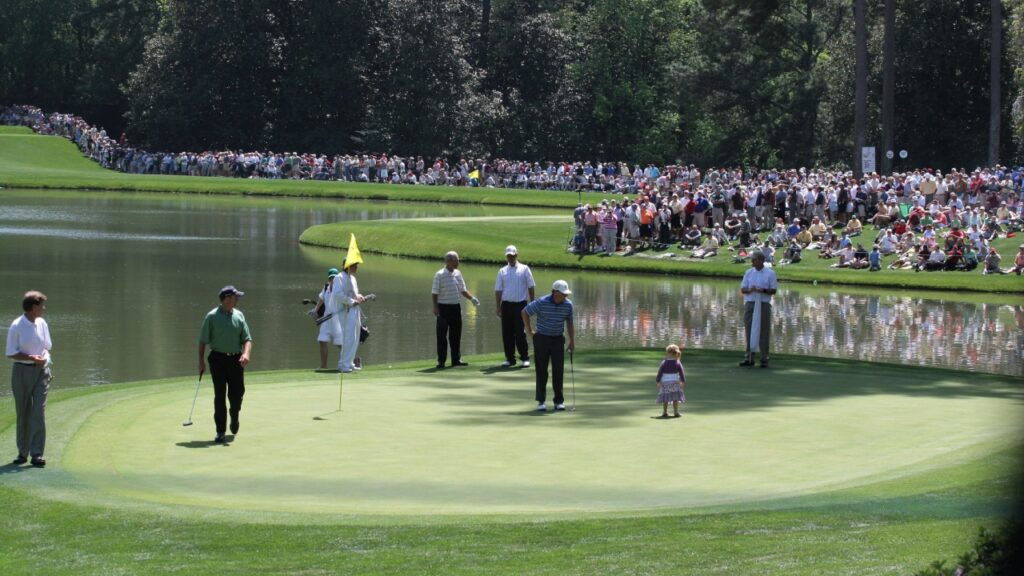
Golf is changing. What used to be quiet afternoons on wide, green courses now includes fast-paced, tech-driven games, team-based battles, and even urban challenges.
These alternative golf formats are growing in popularity not just for serious players, but for casual fans and people who have never picked up a club.
This shift is making golf fun, social, and more accessible. In this article, we explore why these new styles of golf are rising, which formats are attracting fans, and how they are reshaping the sport.
Why Golf Is Getting a Makeover

Golf is no longer just about long walks on quiet courses and keeping score. The sport is evolving to meet the tastes of a new generation of players and fans. Faster-paced games, team competitions, and tech-driven experiences are making golf more exciting and accessible. These changes are helping golf reach a wider audience while keeping the fun and challenge alive.
Turning Golf Into Social Entertainment
One of the biggest changes in golf is that it is becoming more than just a sport.
It is now a venue for social fun. Places like Topgolf lead this trend. At Topgolf, players use microchipped balls and hit toward targets on a large field. Technology tracks how far and accurately each shot is, and points are awarded based on performance.
These venues combine a driving range, game zone, and lounge. There is food, music, and a relaxed atmosphere. Even people who have never played traditional golf feel welcome. Social sports entertainment is all about making golf fun, inclusive, and accessible for everyone.
Three Big Alternative Formats Taking Over
Tech-Powered Leagues: The TGL Example
One of the most exciting innovations is TGL, the league developed by TMRW Sports with Tiger Woods and Rory McIlroy as prominent founders. TGL combines real shots with advanced simulation and entertainment elements.
Players hit real golf balls from real turf but aim at large virtual targets. When they are close to the hole, they putt on a tech-driven, rotating green that changes shape.
Teams are composed of four players, three of whom play at a time with one alternate. Matches are 15 holes, designed for television, and last about two hours. A 40-second shot clock keeps the pace fast, and if a match is tied, a closest-to-the-pin tiebreaker determines the winner.
TGL brings golf into a modern, digital space. It is not just about who has the best swing, but also about strategy, teamwork, and entertainment.

Social and Skill-Based Games: Fun Formats on Traditional Courses
Beyond high-tech leagues, many golf fans enjoy alternative formats on regular courses. These formats are common in casual rounds, charity events, and social leagues.
Scramble is a team game where each player hits, and the team selects the best shot for the next stroke. Alternate shot, also called foursome, has two teammates share a ball and take turns hitting.
Skins assign a point or prize to each hole, and if no one wins a hole, the value carries over to the next. Stableford uses a points system instead of counting total strokes, rewarding better shots with higher points. Creative rounds can mix these formats, changing the rules hole by hole.
These formats make golf more dynamic and encourage interaction among players. They also allow less experienced golfers to compete and have fun without being overwhelmed.
Off-Course and Urban Golf
Golf is also moving off traditional courses.
Urban golf, sometimes called street golf or crossgolf, uses city environments with targets such as benches, trees, or street fixtures. Players often use softer balls made of plastic or leather to stay safe.
Mini-golf is becoming more competitive, with organized tournaments and league play. Video game-style simulators like World Golf Tour allow players to compete on virtual versions of real-world courses.
These off-course formats make golf accessible to people who may not have the time, money, or access to a full course. They also attract younger players and urban audiences seeking casual and unique experiences.
Why Fans and New Players Are Loving These Formats
Alternative formats appeal to fans for several reasons.
They are accessible, so players do not need to be professionals or spend an entire day playing. These games are social, designed for friends, coworkers, and families, with more focus on fun than competition.
Technology adds excitement for audiences accustomed to video games and fast content. Shorter formats make games action-packed and viewer-friendly. Skill does not dominate, allowing novice golfers to enjoy the game without penalty for mistakes.

Frequently Asked Questions
Q: What is an alternative golf format?
A: It is any way of playing golf that differs from the standard 18-hole, stroke-play tournament. Formats can include team games, tech-driven play, or street-style golf.
Q: Is TGL just a video game?
A: No. TGL mixes real golf with virtual technology using simulator screens and tech-driven greens.
Q: Why do people play Scramble?
A: Scramble is fast, team-based, and forgiving. Everyone hits, and the best shot is selected.
Q: Is urban golf safe?
A: Safety depends on rules, location, and the balls used. Many players use soft or plastic balls and follow precautions to avoid hazards.
Q: Can I watch these new golf formats on TV?
A: Yes. TGL matches are designed for television with lively production and two-hour prime-time matches.
Q: Do these formats matter for serious golf?
A: They are not replacing traditional professional tournaments, but they are growing the sport by attracting new players and fans.
Conclusion
Golf is no longer just a quiet sport on serene courses. Alternative formats are making it fun, social, and modern.
- Tech-rich leagues like TGL offer fast, strategic, and entertainment-focused play.
- Team-based games such as scramble, skins, and alternate shot make golf dynamic and inclusive.
- Urban golf, mini-golf tournaments, and simulators provide accessible and casual ways to enjoy the sport.
- These formats attract new players, shorten gameplay, and create experiences that appeal to younger and urban audiences.
- Golf is evolving, proving that this traditional game still has plenty of room to surprise and entertain fans everywhere.
Read More
- How Young Pros Are Shaping Golf’s Competitive Landscape
- The Most Iconic Golf Celebrations of All Time
- The Best Golf Shots Ever Captured on Camera
This article was made with AI assistance and human editing.



